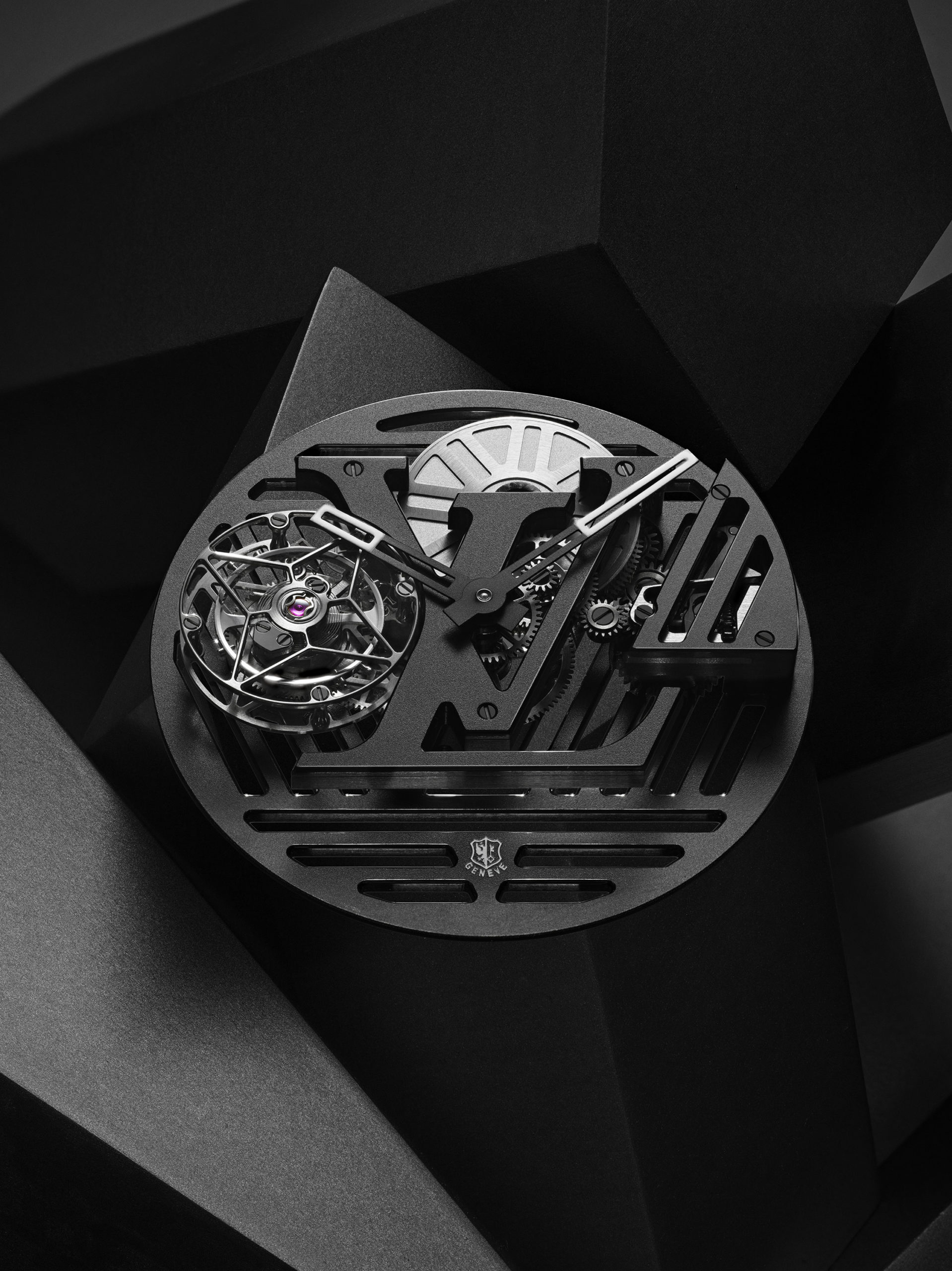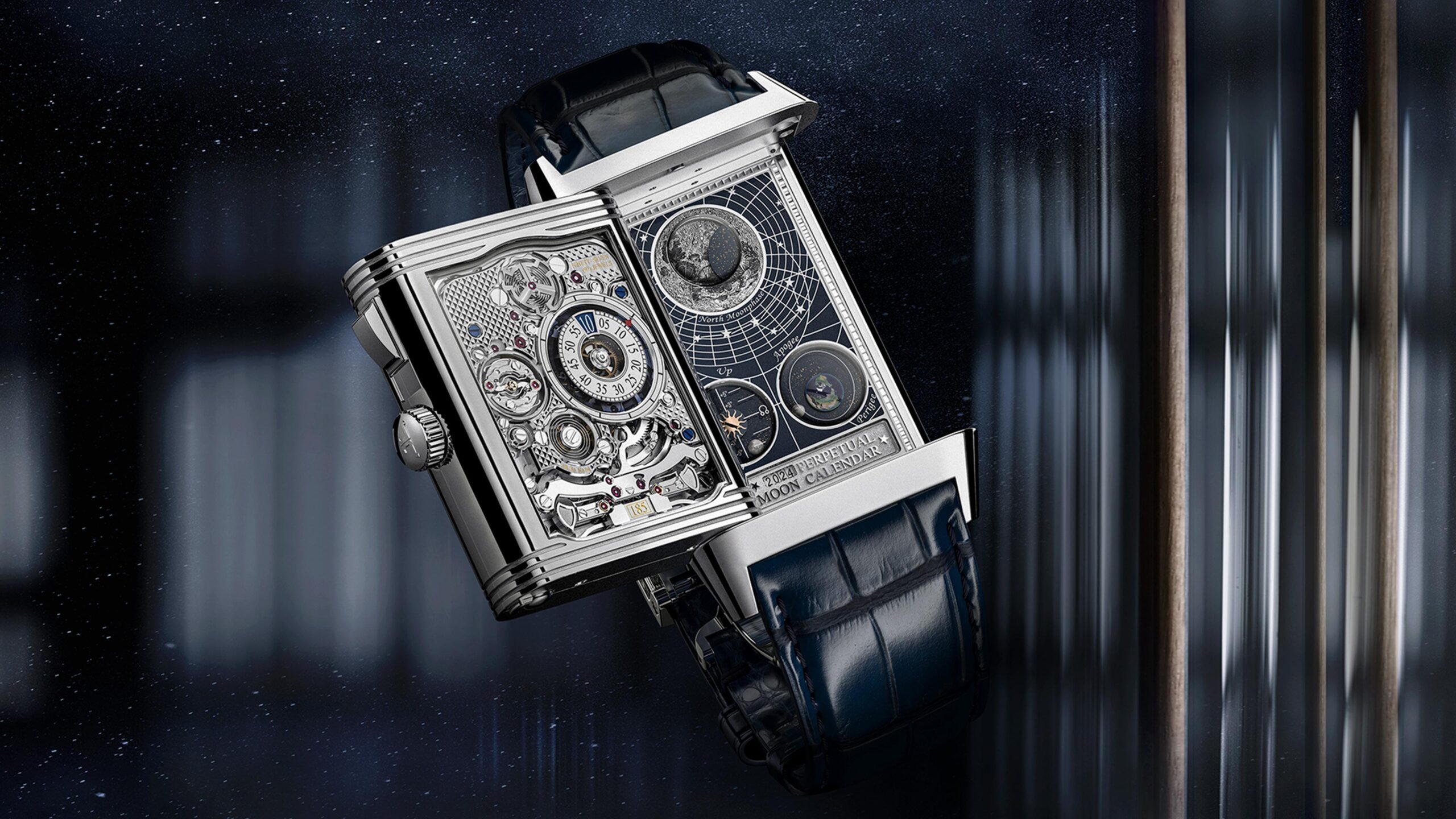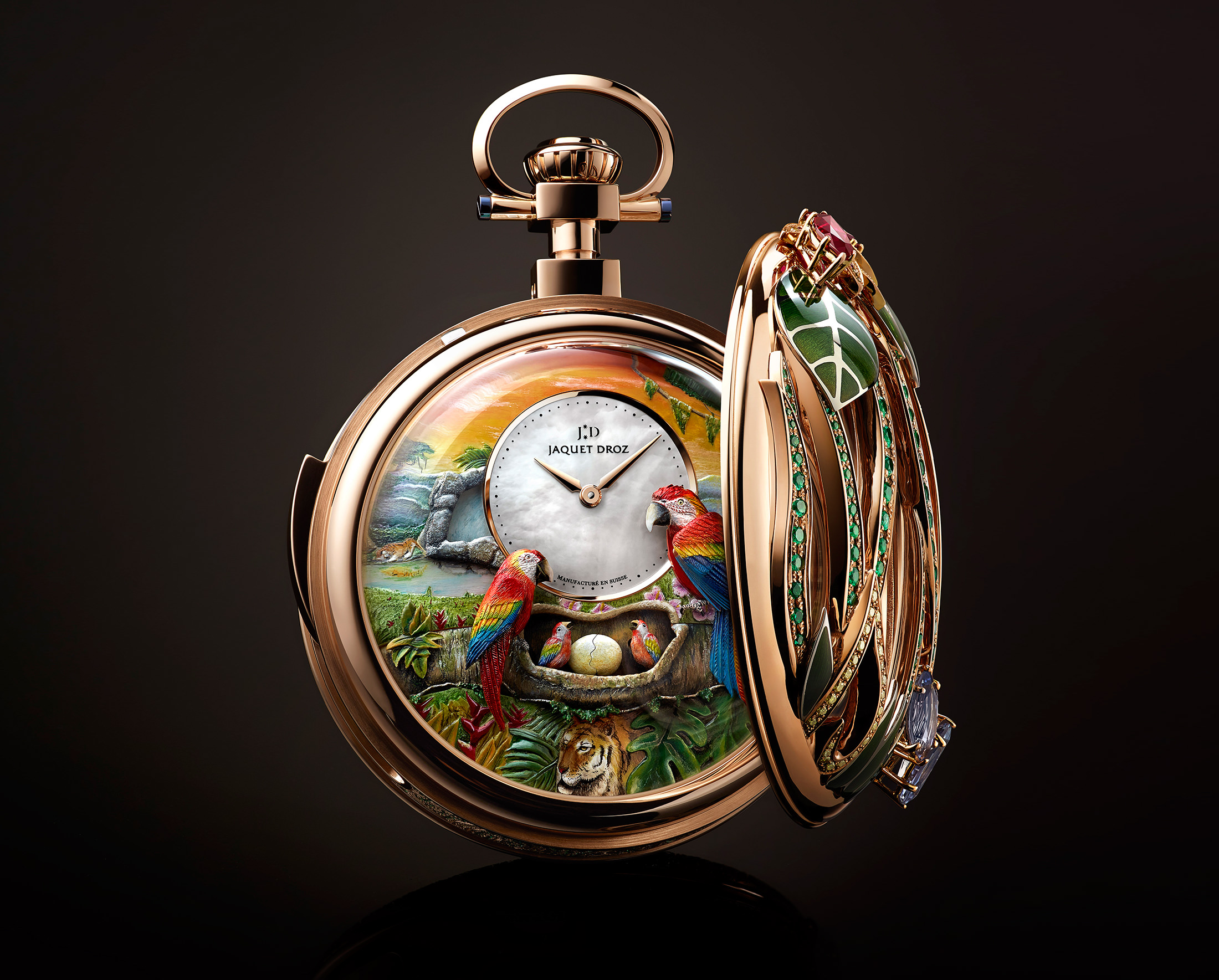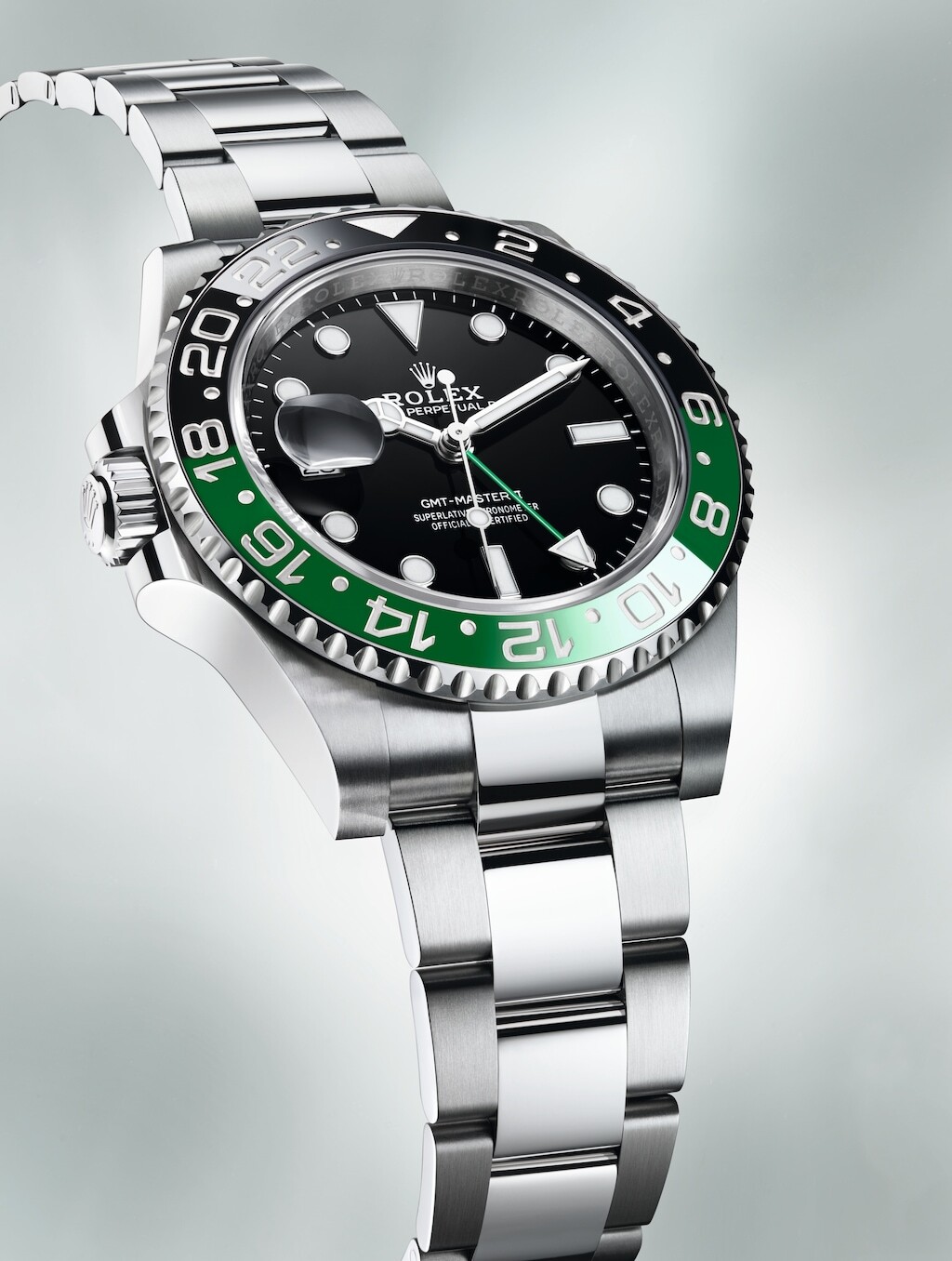-
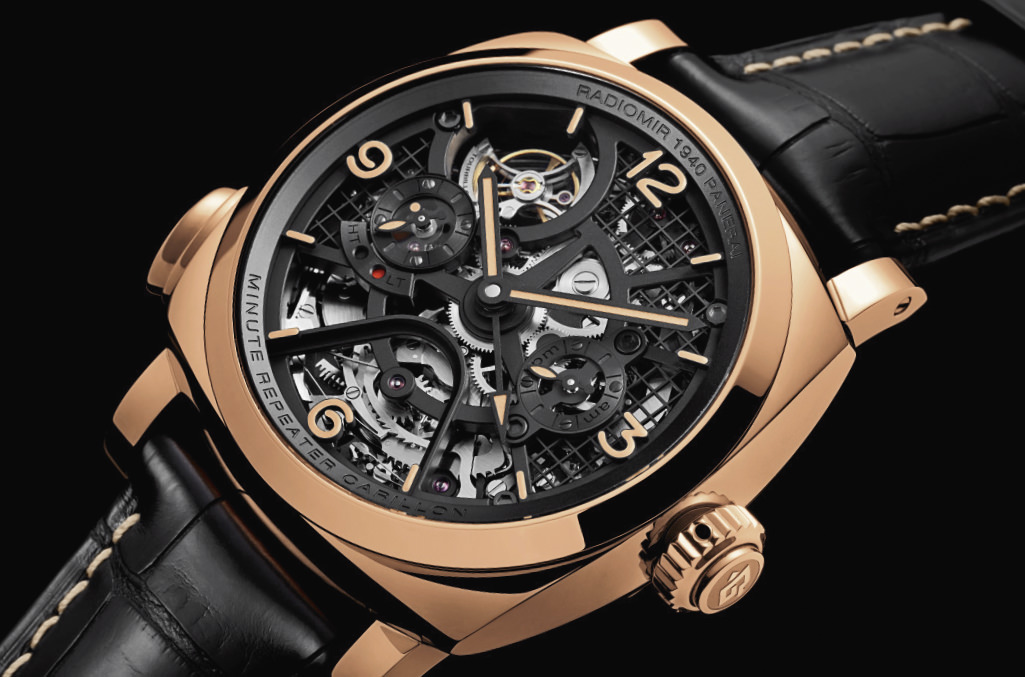
The latest Panerai offering is a rare combination of a decimal repeater with a sophisticated GMT function.
-
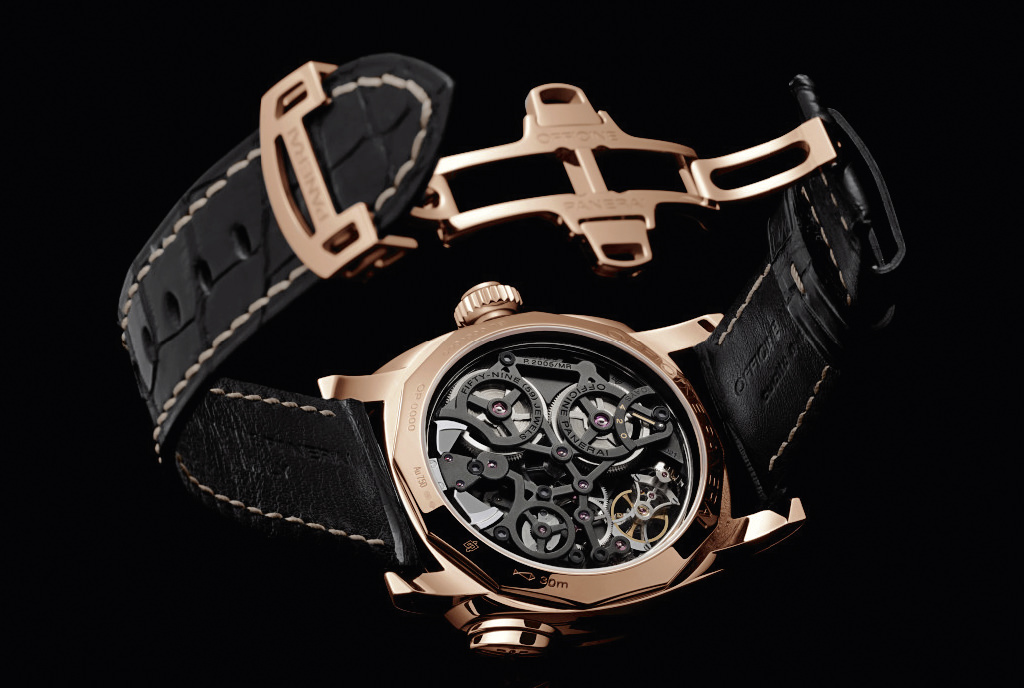
The watch allows the wearer to chime both local and home time.
Panerai’s Radiomir 1940 Minute Repeater Carillon Tourbillon GMT
A complex addition.
For centuries, minute repeaters have represented the pinnacle of complicated mechanical watchmaking. These highly complex and somewhat delicate musical watches chime the time much like the old clock towers in European villages. Given its nautical heritage, Panerai prefers to draw comparisons to a ship’s bell.
Minute repeaters emerged in the early 18th century, before the age of electricity, so the time was discernible even in the dark. Historically, these rare timepieces were sold only by the few elite old-guard manufacturers that possessed the masterful skills to build them. Consequently, minute repeater designs have traditionally tended to be classical and rather formal. This year’s Radiomir 1940 Minute Repeater Carillon Tourbillon GMT Oro Rosso (49mm), however, challenges the old minute repeater orthodoxy with a bold, contemporary aesthetic and a few unusual technical twists. Best known for its brawny diving watches, Panerai celebrates a long and storied history dating back to 1860 when the company produced instruments, such as compasses and depth gauges, in its Florence workshops. In 1936, it started supplying watches to the Italian Royal Navy, and many of its contemporary designs are derived from those original tool watches. While Panerai remains strongly devoted to its roots, it also strives to innovate and bring new perspectives to watchmaking by pushing the technical envelope with achievements such as the new minute repeater.
Panerai spent four years researching and developing its first foray into the revered territory of striking watches, and it did not hold back on breaking new ground, developing the most complicated watch it has ever produced. This resolutely contemporary piece blends the poetry of the ancient minute repeater with the brand’s distinctive tourbillon, a technical feat in itself. Panerai’s first in-house tourbillon regulator, which launched in 2007, broke from convention with a cage that rotates on an axis that is perpendicular, not parallel, to that of the balance. While typical tourbillons spin at a rate of one minute per full revolution, Panerai’s completes a full turn in only 30 seconds in an effort to increase precision.
Combining a minute repeater with a tourbillon is daunting enough, but then Panerai added a practical GMT that speaks to those who frequently criss-cross the globe. And an unprecedented complication allows you to activate the chiming sequence for both home and local times by manipulating the crown.
The watch is equipped with four barrels—two dedicated to the conventional movement with time display and tourbillon, and two to power the home and local time striking mechanisms. “You can play with the chiming mechanism, and you will never reduce the four-day power reserve of the movement, which is really nice,” says Frédéric Dreyer, Panerai’s director of research and development.
The Radiomir challenges the old minute repeater orthodoxy with a bold, contemporary aesthetic and a few unusual technical twists.
For the engineers and designers, robustness and reliability were paramount in producing a chiming watch that is meant to be worn regularly, rather than sitting in a safe, reserved for special occasions. Panerai went further in modernizing the genre by replacing the traditional quarter-hour chime sequence with a decimal system that chimes the number of 10-minute intervals with three hammers hitting three gongs producing a cascading high-to-low melody, endowing the watch with the name carillon (which is a set of bells in a tower that ring in sequence). “The 10-minute chime pattern makes it easier to understand the time when you hear the song,” explains Dreyer. Simply press the push piece at 8 o’clock to activate the chiming mechanism, which strikes the three gongs: first, a single low note for hours, followed by a triple strike for each 10-minute interval, followed by a single high tone for each minute.
Making a harmonious minute repeater is a highly specialized craft, demanding skills that Panerai had to import as well as cultivate in-house. Four years ago, the brand recruited Dreyer from the Swatch Group, where he had worked on striking watches for Breguet and its sister brands. Aside from the intricate mechanics of the movement, which is composed of 633 components, the crafting and tuning of the gongs alone is considered an art form that requires not only technical expertise, but also a finely tuned ear. The goal is to achieve rich, melodious notes and avoid a metallic clanging sound that evokes the sound of banging on a frying pan. In addition to harmony, watchmakers must consider the pitch of the notes, which should not be too high, and duration, which should not be too short. The rhythm, or pacing, of the notes should not feel rushed and must stay consistent throughout the entire chiming sequence. The volume should remain strong as well.
To amplify the sound of the notes, the Panerai team focused on case design. Inside the case, which is made of two pieces seamlessly soldered together, they created a channel that acts as an acoustic chamber, amplifying the sound. Red gold, which is widely regarded as the best for sound propagation, was selected for the case material. “The red gold used at Panerai is special,” explains Dreyer. The red gold alloy 5Npt incorporates platinum, which affects the weight, density, and acoustic value of the metal. If clients prefer, they can opt for white gold, and possibly other materials in the future. “Titanium is quite interesting for the quality of the sound. We are thinking about that,” he adds.
The goal is to achieve rich, melodious notes and avoid a metallic clanging sound that evokes the sound of banging on a frying pan.
Since each watch is built on demand, customers can choose from a variety of customizable options such as case metal, satin or polished finish, and other design elements including the hands, the engraving, and even coloured Super-LumiNova to allow collectors to acquire a truly unique piece.
Because minute repeaters are vulnerable to breakage if not operated properly, Panerai concentrated on developing layered security systems to avoid such unintended consequences. These safeguards prevent you from changing between home time and local time when the chime is ringing, and vice versa: when you are setting the time, you can’t activate the repeater. These systems that protect the movement from human error posed the greatest technical challenge for the team. “Brainstorming, finding a way to achieve the holy grail and achieve reliability took a long time,” says Dreyer. “It is very important for us to have reliable products. We have expertise in long power-reserve movements and chronographs, so the goal was the same: to make a reliable minute repeater.” Thousands of tests, including sound and shock tests, were performed to ensure the movement could withstand everyday wear and tear. Even the case is designed to be water resistant down to 3 bar, or about 30 metres.
The skeletonized movement, which is fully on display front and back, also enhances resonance and infuses the watch with an edgy, modern aesthetic that is amplified with a black DLC (diamond-like carbon) coating applied to certain elements. The open-worked movement is also more seductive, pleasing both the visual and auditory senses. “When you play with the different functions on [this] minute repeater, you can see all the mechanisms working, so technically it’s quite interesting for the owner,” says Dreyer.
Showcasing the watch’s inner workings seems natural, and Dreyer views the achievement as a window into Panerai’s commanding, if perhaps lesser-known, technical abilities. And while the company will continue to focus on the more conventional applications with which it has earned its reputation and fan base, Panerai’s occasional forays into exceptional high complications remind us that it has the ability to play horological symphonies as well as hit songs.





